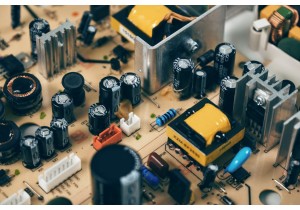The electronic components industry is a highly complex and regulated space, with manufacturers and suppliers needing to carefully navigate a web of safety standards, trade restrictions, and environmental regulations. Failure to maintain compliance can result in hefty fines, product recalls, and damage to a company's reputation.
So what are some of the key compliance and safety issues facing the electronic components industry, and how can companies effectively address them?
Compliance Challenges
One of the biggest regulatory hurdles in this industry is adhering to global trade rules and restrictions. Many electronic components contain materials like lead, mercury, or cadmium that are tightly controlled or banned outright in certain regions. Exporters must ensure their products meet the import requirements of destination countries, which can vary widely.
There are also stringent safety standards that electronic components must meet, such as Underwriters Laboratories (UL) certification in North America and Conformité Européenne (CE) marking for the European Union. These standards are designed to minimize the risk of fire, electrical shock, and other hazards. Noncompliance can lead to products being barred from sale.
Environmental regulations are another major concern. The Restriction of Hazardous Substances (RoHS) directive in the EU, for example, limits the use of certain hazardous materials in electronics. And the Waste Electrical and Electronic Equipment (WEEE) directive mandates the proper collection and recycling of e-waste. Companies that don't meet these requirements can face steep penalties.
Solving the Compliance Challenge
To stay compliant, electronic components suppliers need robust quality control and testing processes. They must closely monitor the materials and manufacturing methods used, and conduct rigorous pre-shipment inspections.
Strong supplier relationships are also crucial. Reputable, trusted component manufacturers that have a track record of compliance can give distributors and resellers greater assurance. Performing due diligence on suppliers and auditing their facilities is highly recommended.
Maintaining updated knowledge of the latest regulatory changes is another key step. Designating a compliance officer or team to closely monitor new and evolving rules can help ensure a company stays ahead of the curve.
Prioritizing Safety
In addition to regulatory compliance, safety is a paramount concern when it comes to electronic components. Faulty parts can pose serious fire, shock, or explosion risks to consumers and industrial users.
Robust testing and quality control are once again essential to mitigate safety issues. This includes not only physical testing, but also comprehensive failure mode and effects analysis (FMEA) to identify and address potential points of failure.
Clear, transparent communication with customers about a product's safety features and testing results is also crucial. Providing detailed product specifications, safety data sheets, and instructions can help end users operate components safely.
Conclusion
Navigating the complex web of regulations and safety standards in the electronic components industry is an ongoing challenge. But by prioritizing compliance, quality control, and transparent communication, companies can not only avoid costly penalties and product recalls, but also give customers greater peace of mind. Proactive management of these issues is key to success in this highly competitive market.

